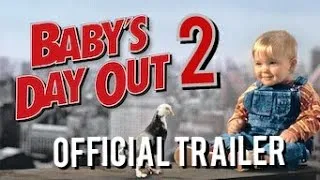Introduction
In a year dominated by science fiction spectacles and superhero franchises, The Killing Season (2026) arrives as a chilling, intelligent thriller that refuses to flinch. Directed by Jonathan Reyes, known for his psychological depth and sharp visual storytelling, the film peels back the layers of a small-town murder spree to explore something far more terrifying: the human psyche.
Plot Summary
Set in the hauntingly quiet Appalachian region, The Killing Season follows Detective Elias Harrow (Michael Fassbender), a burned-out former profiler brought back into the field when a series of ritualistic murders baffle the local authorities. Each crime scene bears symbolic patterns drawn from Appalachian folklore — stories of revenge, buried trauma, and generational curses.
As Harrow dives deeper, he crosses paths with Claire Arden (Florence Pugh), a folklore scholar and survivor of a similar crime years ago. Their uneasy alliance leads them into the depths of a forgotten valley where secrets have rotted for decades.
The killer — known only as "The Huntsman" — seems to operate beyond logic, driven by ancient myths and personal vengeance. But the real horror lies in how close he is to the lives of those trying to catch him.
Performances
Michael Fassbender delivers a career-best performance as the emotionally fractured Harrow — equal parts haunted and hardened. Florence Pugh brings urgency and grace to Claire, offering a mix of intellectual rigor and deep vulnerability. Mahershala Ali stuns in a supporting role as a grieving sheriff who knows more than he admits, while Anya Taylor-Joy appears in a brief but powerful arc as a mysterious cult witness.
Direction & Cinematography
Director Jonathan Reyes leans heavily into atmosphere, using misty forests, candlelit cabins, and old VHS footage to create a creeping sense of dread. The cinematography by Linnea Sørensen is breathtaking — muted palettes of brown, gray, and rust that mirror the moral decay of the town. Scenes linger uncomfortably, challenging the audience to sit with uncertainty and fear.
The film avoids cheap jump scares, relying instead on quiet tension, long silences, and complex characters to build psychological horror.
Themes
At its core, The Killing Season is a story about inherited violence — how trauma echoes across generations, how myths shape memory, and how justice can become twisted by obsession. It’s a commentary on rural America, the wounds it hides, and the stories it tells to protect its own darkness.

Reception
Premiering at the Toronto International Film Festival in early 2026, the film received an eight-minute standing ovation. Critics praised its restraint, atmosphere, and chilling realism. Some compared it to Se7en and True Detective, while others noted its distinct blend of folklore and procedural.
Audiences are more divided — some viewers found the pacing too slow or the ending too ambiguous — but few deny the film’s visual beauty and emotional weight.
Final Verdict
The Killing Season (2026) is not just another detective thriller. It’s a dark, cerebral exploration of the stories we tell to survive — and the monsters that live within those stories. With haunting performances and razor-sharp direction, it stands as one of the most ambitious and unsettling films of the year.
-1752130305-q80.webp)
-1751251866-q80.webp)
-1751859555-q80.webp)
